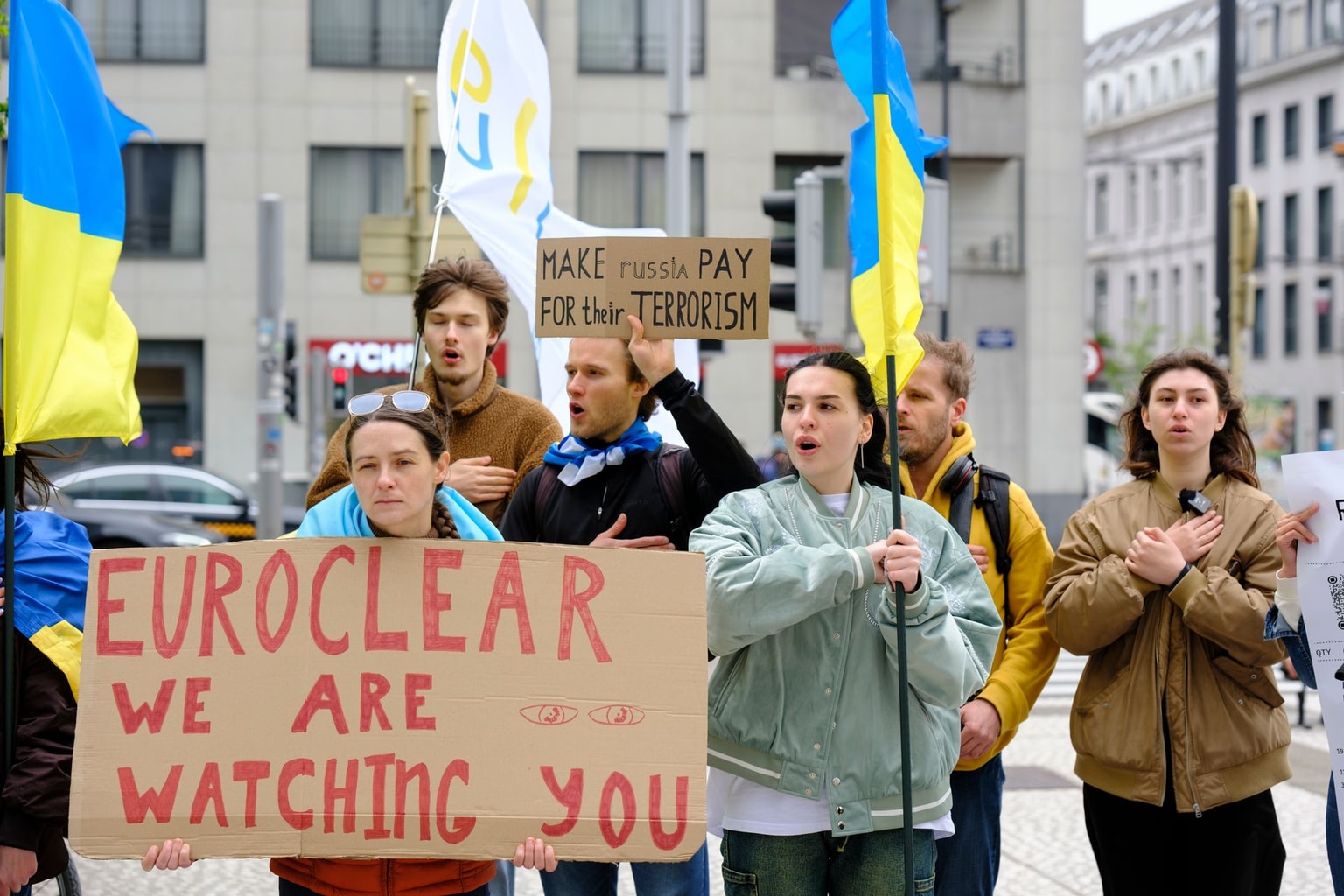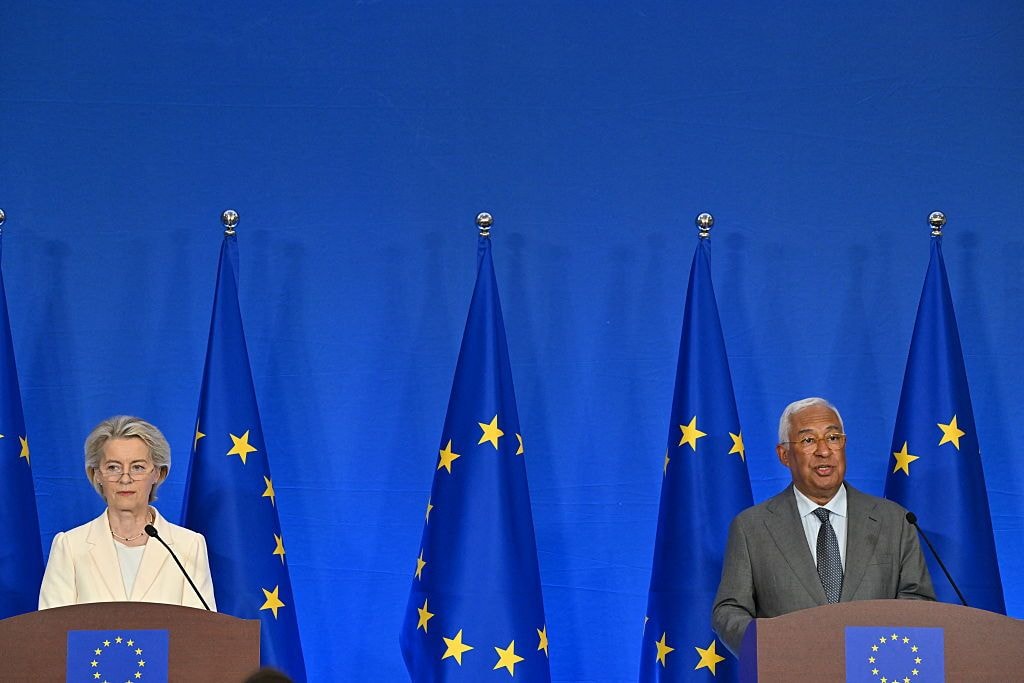Explainer: What happened in Kazakhstan, what comes next

Kazakhstan faces an uncertain future as a Russian-led military contingent arrived in the country on Jan. 6 to support embattled president Kassym-Jomart Tokayev amid mass anti-government protests.
What started as a demonstration over fuel prices in one city on Jan. 2 rapidly spread nationwide, culminating in large-scale armed clashes over control of Almaty, Kazakhstan’s biggest city, between the army and protesters.
According to the Kazakh interior ministry, 18 soldiers and law enforcement officials, as well as “tens” of protesters, have been killed in the clashes so far. Nearly 2,300 people have been arrested.
In the face of the brutal military response, demonstrators continued to assemble in cities across Kazakhstan throughout Jan. 6.
Russia will provide most of the forces being sent into Kazakhstan, with the first Russian troops arriving this evening. It is not yet clear whether their function will be to assist the suppression of protests, or to shore up Tokayev’s regime against state elements loyal to ex-President Nursultan Nazarbayev.
Protesters called for the removal of Nazarbayev from his influential role as chair of Kazakhstan’s Security Council, but his dismissal by Tokayev on Jan. 5 angered security officials still loyal to the ex-president.
Whether Russia’s military intervention will distract it from its ongoing 122,000-strong troop buildup on Ukraine’s border will depend on Tokayev’s ability to suppress dissent and organized opposition.
Professor Sergiy Shtepa, who was born in Kazakhstan but now heads the Dragomanov Sociological Center in Kyiv, told the Kyiv Independent that he expects Russia will increase its initial troop commitment, and get sucked into a difficult occupation, taking its focus off Ukraine.
“Ukraine will get at least a few (extra) months to prepare,” he said.
Why did the protests start?
A sudden spike in liquid petroleum gas (LPG) prices at the turn of the year sparked an outpouring of deep-seated popular anger about low wages, inequality, and elite-level corruption.
LPG prices in hydrocarbon-rich Kazakhstan used to be kept artificially low by the government. This made domestic consumer LPG sales unprofitable for producers, causing regular supply shortages.
The government therefore decided to gradually phase out controls on LPG prices, a process which concluded on Jan 1. As a result, prices doubled within days from $0.14 to $0.28 per litre, causing anger among drivers – most cars in the gas-producing western region of Mangystau, where the protest started, run on LPG.
Protesters assembled in the city of Zhanaozen’s central square on Jan. 2. Despite private LPG sellers scrambling to cut back prices in response to the demonstration, it remained on the streets overnight. The following day, the protest spread to other cities across Kazakhstan, taking on a broader anti-government focus.
“Frustration about inequality and lack of justice is so widespread that it only took a local price issue to spark a mass protest,” said Paolo Sorbello, an Italian journalist and researcher who has lived in Kazakhstan for five years.
Protesters complained about low wages and purchasing power, government authoritarianism, and called for the resignation of Nazarbayev from the chairmanship of Kazakhstan’s powerful Security Council.
Nazarbayev was Kazakhstan’s president from 1990 to 2019, a towering authoritarian figure who led the country’s transition from a poor Soviet Republic to a major oil and gas exporter. According to Freedom House, Kazakhstan’s elections are neither free nor fair, and suppression of dissent is commonplace.
Nazarbayev is seen as the epitome of a corrupt old guard of elites, and Tokayev was widely considered to be his protégé and handpicked successor.
According to Dr. Diana Kudaibergenova, a Kazakh-born sociology lecturer at Cambridge University, the mass economic protests in 2019 marked a change in how the Kazakh people viewed their government’s corruption, and that the country had seen two and a half years of constant protests since.
“People understood it's not just an economic issue, it's an issue connected with a regime that is corrupt and is enabling this economic injustice to go on,” Kudaibergenova told the Kyiv Independent.
“The timing of these protests was unexpected, but (they are) not totally surprising,” explained Sorbello.
How did it escalate?
Jan. 5 started with the announcement that Kazakhstan’s Cabinet of Ministers had submitted their resignations to Tokayev, who accepted them. This did not satisfy the protesters, who still came out onto the streets in large numbers, with some engaging in scuffles with police.
In the afternoon, news agency Interfax Kazakhstan reported that several thousand protesters had stormed the Almaty city hall. This was followed in reports by other media that stun grenades had been used by law enforcement who were battling protesters for control of the building.
Russian media outlet Meduza subsequently reported that the presidential residence in Almaty had also been seized by demonstrators. Photos and videos of both buildings on fire later surfaced on the internet.
Almaty’s police chief, who has been appointed as the “city commandant” by the government during the protests, said in the afternoon that over 500 people had been injured in the demonstrations and 120 vehicles damaged by what he called “extremists and radicals.”
Meanwhile, unconfirmed reports of law enforcement officers abandoning their posts and siding with protestors came in from across the country.
Later in the day, the internet in the country was turned off. At midnight, news website Vlast reported that the internet in Almaty had been turned back on. As of Jan. 6, the internet was back on in Almaty and Aktau, but still off in the rest of the country.
In the evening of Jan. 5, Tokayev addressed his nation on television, announcing that he would not flee the country, that he would take over from Nazarbayev as the head of the Security Council, and that he was ready to use “harsher measures” to quell unrest.
As well as firing Nazarbayev, Tokayev dismissed some of the ex-president’s allies from key security posts, which has enraged and alienated Nazarbayev’s supporters.
As Tokayev was making the speech, Kazakh media outlet Orda News reported that protesters had taken control of Almaty airport. Several hours later, the government announced that it had regained control of the airport.
What could happen next?
Those who oppose the government in Kazakhstan have been incensed by Tokayev’s request for military support from the Collective Security Treaty Organisation (CSTO), which includes Armenia, Belarus, Kazakhstan, Kyrgyzstan, Russia, and Tajikistan. Russia will provide the bulk of the troops.
Shtepa is sceptical that the initial CSTO force will be sufficient to quell unrest, citing military sociology research.
“One person with an automatic rifle can control around 500 people without weapons. You would need 4,000 just to control Almaty.”
The sociologist can foresee a potential civil war between Nazarbayev and Tokayev supporters in the military and law enforcement agencies, with Russia supporting the incumbent president.
“You could see the start of this in St. Petersburg in December, when (Russian President) Putin got in the car with Tokayev rather than Nazarbayev.”
Shtepa believes that most of the county’s security forces are still loyal to Nazarbayev, but that Tokayev will have the support of his newly appointed government and the northern regions of Kazakhstan, which have a higher concentration of ethnic Russians.
However, Sorbello disagrees, saying that Nazarbayev would not want a civil war to be his legacy.
“If we buy that he’s out of the country (Nazarbayev is presently believed to be in Dubai) and his elite was decimated, what’s the point of them holding the fort?”
What does this mean for Ukraine?
Russia’s involvement in Kazakhstan could mean that the Kremlin is too preoccupied in the short term to engage in any attack on Ukraine, fears of which have been building over the past several months, and which Ukrainian and Western military intelligence predicted could happen in January or February of 2022.
Russia has assembled 122,000 troops near Ukraine’s borders and has demanded that Ukraine’s U.S. and European allies agree to never allow the country into NATO.
In line with the Kremlin’s continuous narrative, Putin recently falsely said that Ukraine was “created by (Soviet leader Vladimir) Lenin,” undermining Ukraine’s right to statehood.
Shtepa believes that Russia will get bogged down in its venture into Kazakhstan by the complexity of the conflict in Kazakhstan to simultaneously attack Ukraine.
“It won’t be as easy as they think. They’ll spend a lot of money and use a lot of military resources.”
However, Timothy Ash, Senior Strategist at London-based BlueBay Asset Management, believes that Putin will be able to take control of the situation in Kazakhstan, after which he will be even more eager to fulfil any plans to attack Ukraine.
“I think that Putin will be smarting over what he will see as a Western plot in Kazakhstan,” he wrote in a mailout.
“He will look for a face-saving payback in Geneva (talks with U.S. President Biden) and ultimately in Ukraine.”










